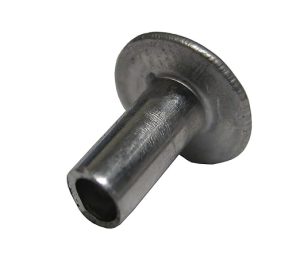
Rivets are synonymous with aerospace manufacturing. From small piston-engine aircraft like the Cessna 172 to large commercial jets like the Airbus A380, most airplanes use rivets in their construction. These permanent fasteners create strong joints that are better protected from loosening than traditional nuts and bolts. Smoking rivets, however, should typically be replaced to preserve the aircraft’s structural integrity.
What Are Smoking Rivets?
Smoking rivets are installed rivets that have begun to fail due to vibration-related stress. They aren’t literally smoking in the sense that they are on fire. Rather, smoking rivets are rivets that have come loose from excessive shaking or vibrations.
Why They Are Called ‘Smoking Rivets’
Smoking rivets receive their namesake from their characteristic black trail. All rivets, including traditional rivets and blind rivets, have a head. Normally, the head will remain pressed tightly against the surface of the object in which the rivet is installed, resulting in a strong joint.
Vibrations, though, can cause rivets to loosen. When this occurs, the head may move slightly. As the head rubs against the side of the aircraft material, it will create a trail of dark-colored aluminum oxide that looks like smoke.
Why Smoking Rivets Are a Problem
Smoking rivets are essentially loose. They haven’t come all the way out of the hole in which they are installed, but they are still loose and have “play.” Neglecting to replace a smoking rivet, however, may lead to joint failure.
Rivets are fasteners that, like most fasteners, are used to join two or more objects. When a rivet fails, the objects may separate and come apart.
Smoking rivets can also wear down the surrounding aircraft panels. After all, the dark-colored aluminum oxide comes from adjacent materials. As these surrounding panels wear down, they will be exposed to the elements, which can lead to corrosion.
Tips to Prevent Smoking Rivets
Smoking rivets are often attributed to improper sizing. If a rivet is too small for the hole, it will fit loosely, thereby increasing the risk of it becoming a smoking rivet.
You can prevent smoking rivets by using the right tools. Some rivets require special tools to install. Neglecting to use the right tool for installation may result in a loose fit.
Another tip to prevent smoking rivet is to use even and proper pressure during installation. Installing a rivet at an angle relative to the object’s surface will result in a non-uniform fit, which can make it loose.



